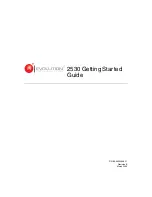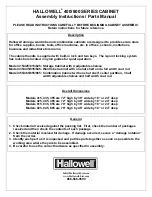
EonNAS 1000 Series Hardware Manual
42
2.8
Installing Hard Drives
Hard drives are purchased separately. When purchasing hard drives, please consider
the following factors:
2.8.1
Prerequisites
Capacity (MB/GB): Use hard drives that have the same capacity and rotation speeds.
RAID arrays use a “least-common-denominator” approach meaning the maximum
capacity used in each drive for comprising a logical configuration is the maximum
capacity of the smallest drive. Profile: The enclosure drive bays are designed for
3.5-inch wide x 1-inch pitch hard drives.
Drive Interface Type: The enclosure accommodates SATA-II (3Gbps) or SATA-III
(6Gbps) hard drives.
NOTE
The hard drives and drive trays should only be installed into the system after it has
been mounted into a rack cabinet. If the hard drives are installed first, the system will
be too heavy to handle and the possible impact during installation may damage your
hard drives.
Users
MUST
install at least
ONE
hard drive into slot 1 to setup the EonNAS system.
It is strongly recommended to install at least
TWO
hard drives upon initialization!
OS hard drives
: Enclosure slots 1 & 2 are for OS dedicated hard drives. It is
recommended that the two hard drives are of the same brand, capacity, rotational
speed and model.
RAID Configuration
: Below is a list of the level of fault tolerance for different RAID
levels:
RAID Level
Max. No. of Failed Drives without Data Loss
0
No fault tolerance. 1 drive fails and the data is lost.
1
1 (mirrored pair)
5
1
6
2
SAS / SATA hard drive for storage
: It is recommended to use hard drives that are
















































